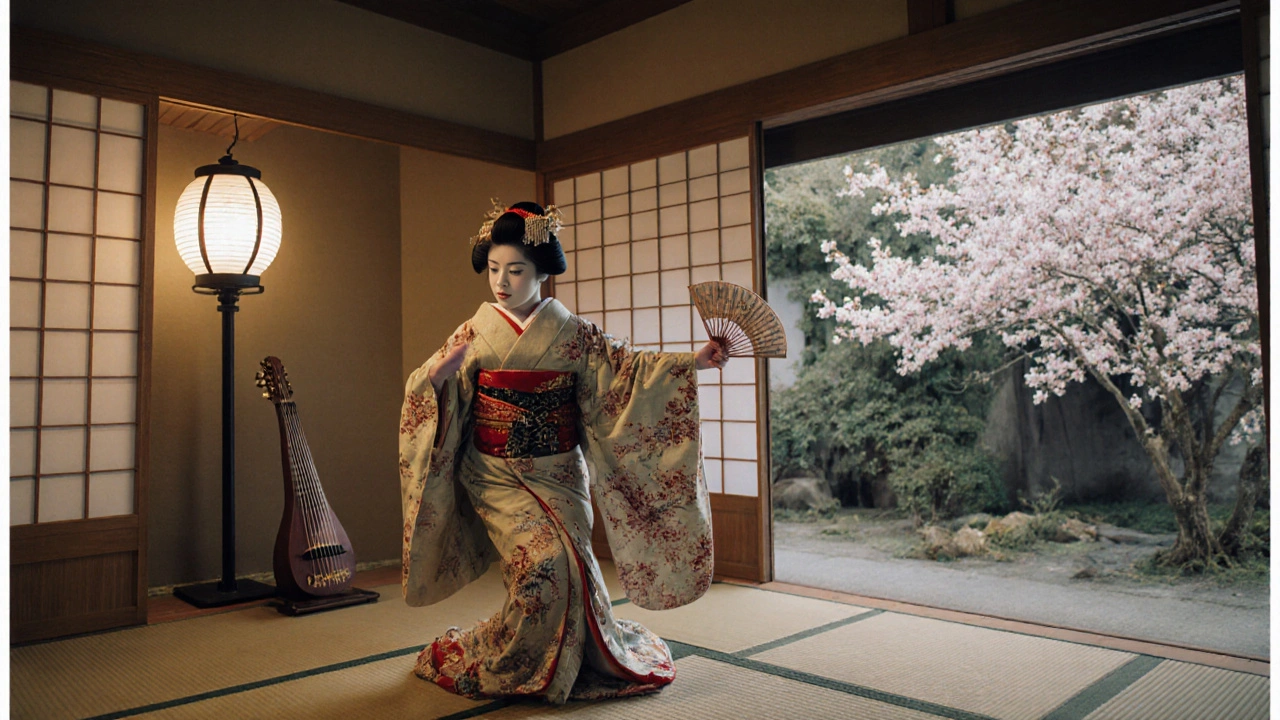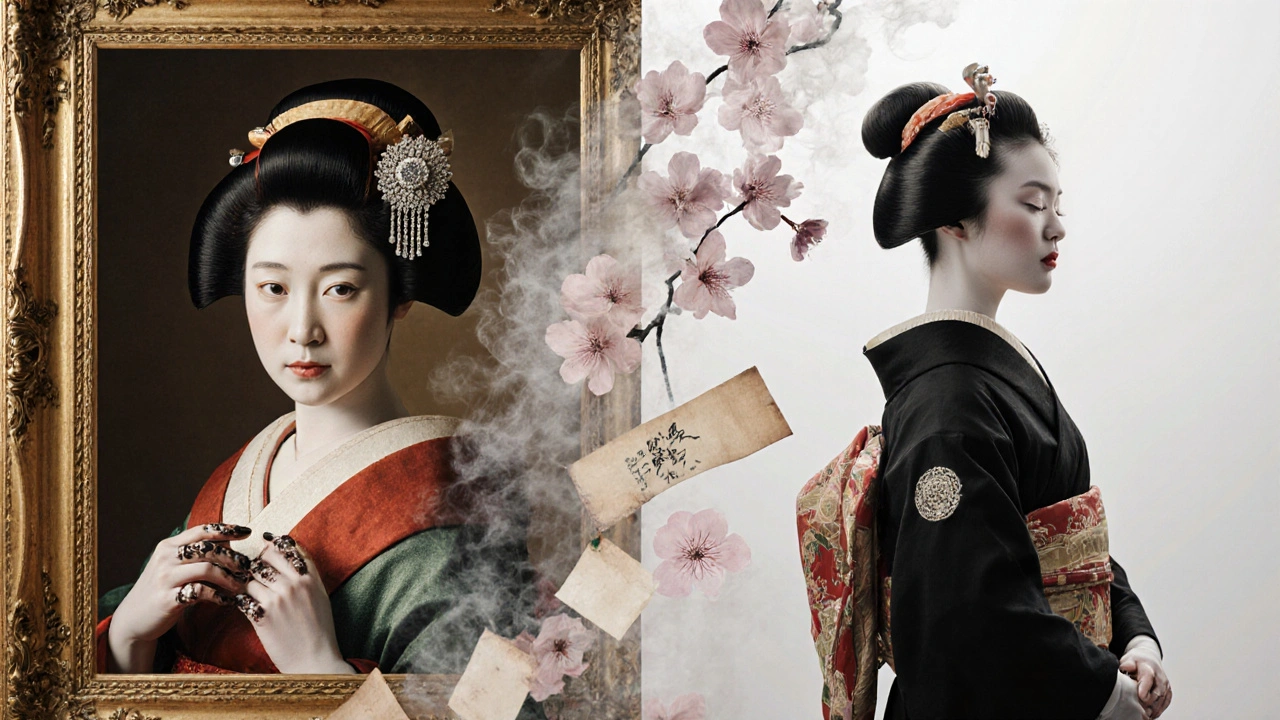You’ve probably seen them in movies: women in elaborate kimonos, painted faces, holding fans, gliding through candlelit rooms. Or maybe you’ve seen images of women in Renaissance gowns, surrounded by nobles, whispering secrets over wine. Both are often called courtesans. But one is Japanese. One is European. And they’re not the same thing-even though people mix them up all the time.
What Exactly Is a Courtesan?
A courtesan wasn’t just a prostitute. That’s the biggest mistake people make. In 16th- to 18th-century Europe, especially in Italy, France, and England, a courtesan was a highly educated woman who offered companionship, conversation, and sometimes sex-but her value came from her mind, not just her body. She knew poetry, music, politics, and philosophy. She could debate with philosophers, play the lute better than most men, and navigate court intrigue like a chess master.
Think of her as a cross between a modern-day influencer, a political advisor, and a high-end escort-all wrapped in silk and pearls. Some courtesans became so powerful they influenced kings. Veronica Franco of Venice wrote published poetry and defended herself in court against accusations of witchcraft. Catherine de’ Medici, though born noble, started as a courtesan before becoming queen of France. These weren’t women on the margins-they were at the center of power.
What Exactly Is a Geisha?
A geisha, on the other hand, is Japanese. The word means "artist"-from gei (art) and sha (person). Geishas trained for years in traditional Japanese arts: tea ceremony, classical dance, shamisen music, calligraphy, and conversation. Their job wasn’t to sleep with clients. It was to entertain them-with wit, grace, and flawless performance.
Geishas worked in ochaya (tea houses), where wealthy merchants and samurai gathered for evenings of art and ritual. The most famous districts-Gion in Kyoto, Shimabara in Osaka-were like exclusive cultural clubs. A geisha might spend hours perfecting a single dance step, or memorizing hundreds of traditional songs. Her makeup, her kimono, even the way she tied her obi-all were carefully chosen to reflect season, status, and occasion.
And here’s the thing: geishas didn’t sell sex. In fact, their reputation depended on staying above it. A geisha who slept with a patron risked losing her standing. The real intimacy was in the art-the shared silence between notes, the subtle nod that said more than words ever could.
Why People Confuse Them
Why do so many think geishas are just Japanese courtesans? Blame Hollywood. Movies like Memoirs of a Geisha turned geishas into romanticized sex symbols. The book and film implied sexual relationships were part of the job. That’s false. Real geishas were artists. The confusion comes from mixing them up with oiran-high-ranking courtesans from Japan’s Edo period who *did* offer sexual services. But by the 1800s, geishas had emerged as a separate, respected profession, distinct from oiran.
Similarly, European courtesans were often painted as seductresses in pop culture. But their real power came from intellect. A courtesan could out-debate a duke. A geisha could out-dance a prince. Both were elite entertainers. But one was trained in Renaissance philosophy, the other in Edo-period aesthetics.
Their Roles Compared
Let’s break it down.
| Aspect | Courtesan (Europe) | Geisha (Japan) |
|---|---|---|
| Primary Role | Companion, conversationalist, sometimes sexual partner | Professional entertainer and artist |
| Training | Self-taught or privately tutored in literature, music, politics | Years of formal apprenticeship in dance, music, tea ceremony |
| Client Base | Nobility, royalty, wealthy merchants | Samurai, merchants, high-ranking officials |
| Sexual Expectations | Often part of the arrangement, though not always | Strictly prohibited; could ruin reputation |
| Public Perception | Controversial but influential; some became cultural icons | Respected artists; seen as guardians of tradition |
| Legacy Today | Historical figures studied in art and gender studies | Still active in Kyoto and Kanazawa; fewer than 1,000 remain |

What They Shared
Despite their differences, both courtesans and geishas were women who carved out space in male-dominated worlds. Neither had access to formal education or property rights. Yet both built careers based on skill, not birth. They controlled their own income, lived independently, and moved in elite circles-something most women of their time couldn’t dream of.
Both were subject to exploitation. Courtesans could be abandoned by patrons. Geishas could be trapped in debt by their okiya (training houses). But within those constraints, they created art, influence, and autonomy.
Modern Echoes
Today, you won’t find courtesans in London or Paris. Their world vanished with the decline of monarchies and the rise of capitalism. But you can still see geishas in Kyoto. A few hundred remain, mostly in Gion. They perform at private tea houses, and tourists can book performances-but only through trusted agencies. The real geisha experience isn’t for sale on Airbnb.
Modern equivalents? Think of elite hostesses in Tokyo’s high-end bars, or cultural consultants who host private dinners with historians and artists. They don’t sleep with clients. They make you feel smart, seen, and deeply understood. That’s the real legacy of both courtesans and geishas: the art of making someone feel like the most interesting person in the room.
What to Expect Today
If you visit Kyoto and want to see a geisha, don’t expect to walk up to a street corner. They’re not tourist attractions. You need an introduction-usually through a hotel concierge or a licensed cultural tour. A typical evening might include a kaiseki meal, live shamisen music, and a short dance performance. It costs between $500 and $1,500 per person. And yes, you’ll need to book months in advance.
There’s no equivalent in Europe today. But if you want to feel what a courtesan’s world was like, visit the Palazzo Vecchio in Florence or the Louvre in Paris. Look at the portraits of women like Veronica Franco or La Belle Otero. See how they’re dressed-not as prostitutes, but as queens. That’s the truth.

Common Misconceptions
Let’s clear up a few myths:
- Myth: Geishas are prostitutes. Truth: They’re artists. Sex was never part of the job.
- Myth: Courtesans were just kept mistresses. Truth: Many were self-made, financially independent, and politically connected.
- Myth: All Asian women in traditional dress are geishas. Truth: Geishas are a rare, specific profession. Most women in kimonos are just wearing traditional clothing.
- Myth: Courtesans were all Italian. Truth: They existed across Europe-from Venice to Paris to London.
Frequently Asked Questions
Were geishas ever involved in sexual relationships?
No. Geishas were trained to provide entertainment, not sexual services. While some women in Edo-period Japan did offer sex-called oiran or tayu-these were separate from geishas. By the 19th century, geishas were explicitly defined as artists, and their reputation depended on maintaining that boundary. Any geisha who engaged in sex would lose clients and status.
How did courtesans earn money?
Courtesans earned through patronage. Wealthy men paid for their company-dinners, concerts, travel, and sometimes sex. But their income came from gifts, jewelry, property, and monthly stipends. Some courtesans owned homes and hired servants. Veronica Franco received a pension from the Venetian Senate. Their wealth was real, not temporary.
Can you still meet a geisha today?
Yes-but not easily. Geishas still work in Kyoto, Kanazawa, and a few other towns. You can book a performance through licensed cultural agencies or high-end hotels. But you can’t just walk into a teahouse. These are private, invitation-only events. Most geishas today are in their 30s to 60s, and there are fewer than 1,000 left in Japan.
Why did courtesans disappear?
As monarchies fell and democracy rose in the 19th century, the old aristocratic system collapsed. The wealthy no longer needed courtesans to navigate court life. New social norms, feminism, and the rise of professional women made the courtesan’s role obsolete. By the 1900s, they were gone-except in history books.
Are geishas and maiko the same thing?
No. A maiko is an apprentice geisha, usually between 15 and 20 years old. Maiko wear more colorful kimonos, longer sleeves, and elaborate hairstyles. They train for 5-7 years before becoming full geishas. Once they graduate, they simplify their appearance and focus on mastery, not youth.
Final Thought
Both courtesans and geishas were women who turned limitation into power. In a world that gave them few rights, they built careers based on art, intelligence, and discipline. Today, we look back and romanticize them. But the truth is more interesting: they weren’t objects of desire. They were masters of their craft. And that’s what made them unforgettable.


